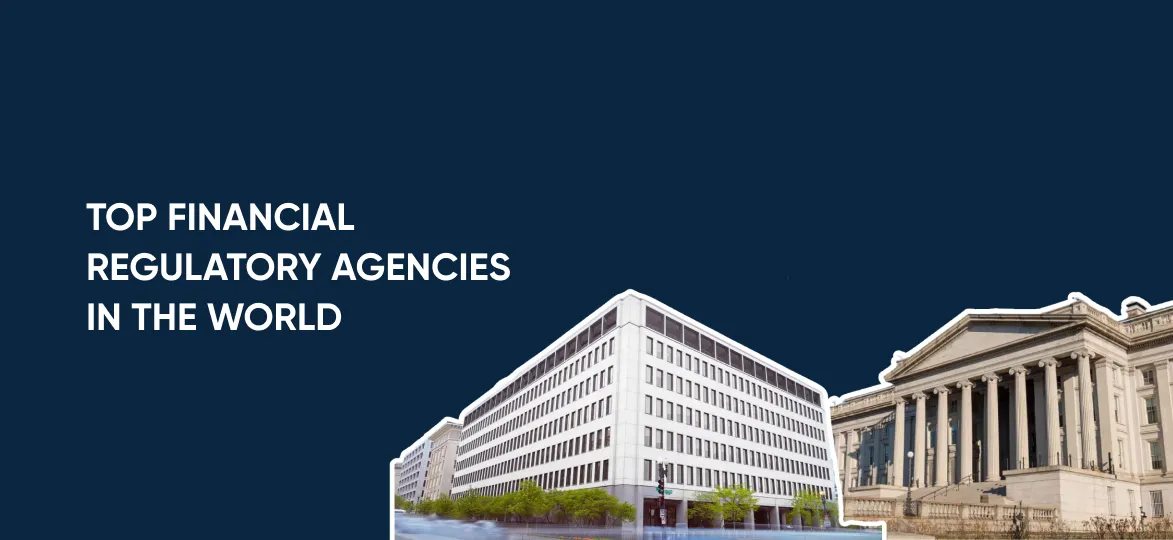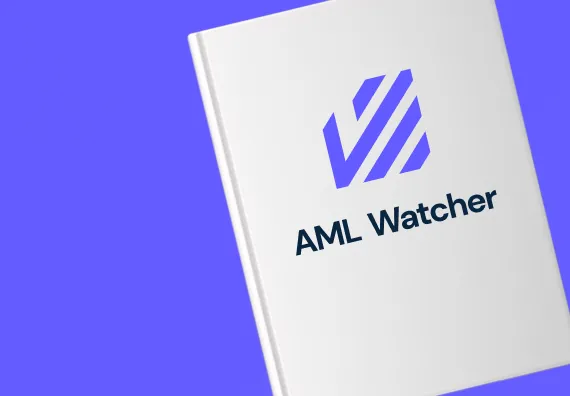
Top Financial Regulatory Agencies In The World
“We apologize to inform you that your recent transaction has been temporarily paused due to a mandatory security check. We appreciate your patience and request you provide the following documents to resume the account activity”
An email I received from my bank after processing a business transaction caught me agitated, making me almost shout “What kind of godly hell is this”? If you ever find yourself at the receiving end of such emails, remember you are not alone.
The reason behind such investigative emails is that, with approximately 128,000 various regulatory restrictions, financial services (banks and insurance firms) are the second most regulated sector in the world.
Who is to blame here? Regulatory bodies, the financial industry, or fraudsters who seep through financial loopholes and corrupt global financial stability?
What led to a strictly regulated financial sector and how it gave birth to global regulatory agencies designing the compliance track for institutions?
This article will help you find answers to all these questions.
Let’s start with the origin of top financial regulatory agencies when financial regulation took a drastic turn from commercial interests to setting a security net against financial crimes.
Origin of Financial Regulatory Bodies – How Did We Get Here?
Spread over almost two centuries, the legislative lore of the regulated financial sector is quite well-maintained and documented.
The impact of any action decides the seriousness of any countermeasure taken in response.
Undoubtedly it always is a financial catastrophe that gives birth to regulatory fire whether in the form of a new law or governance body to overlook existing legislation.
In addition to historical events leading to financial regulatory reforms, the drastic shift from smoking on the economic floors of America in the 19th century to globalization required governance of the wild jungle.
History provides evidence that unregulated capitalism can eventually lead to chaotic events of financial panics and instability for instance the late 19th century followed by the Great Depression and the financial chaos of 2008.
The financial irregularities and exploitation of cracks in financial systems facilitated illicit money-makers to hide and move their crime proceeds leading to the shattering global economy and enraging the public with no sense of accountability from rule and law.
It is hard to give an accurate estimate of money laundering and predicate financial crimes motivated by crimes including drug trafficking, mass proliferation, human trafficking, trafficking of human organs, art, gold, and last but not least cultural properties.
62% of the gross profit made from $85 billion sold cocaine is laundered each year. To seize drug cartels from fueling financial instability, the KingPin Act offers a gateway.
Analyzing the grave socioeconomic impacts of crimes and the illicit flow of crime proceeds, the Team Good Guys sat together with a unified aim to design and enforce anti-money laundering and countering the financing of terrorism (AML/CFT) measures for financial industries, gradually expanding to businesses dealing in finances.
Let’s get to the point and explore major financial regulatory bodies deciding the course of AML compliance for global businesses.
Five Major Financial Regulatory Agencies
The complex and fragmented network of regulatory watchdogs in the United States is more of a patchwork of federal and state agencies.
The boggling framework usually confuses the financial sector with questions like who regulates what and turns to whom for a particular concern on hand.
Let’s explore AML regulatory and enforcement bodies separately.
Financial Action Task Force (FATF)
Established in 1989, FATF, a global task force against financial abuse came into place. With a mission to protect global financial stability and promote financial sustainability, FATF sets standards for AML guidelines against the war with money launderers and corrupt actors.
The infamous FATF’s recommendations on curbing financial crimes offer a comprehensive set of compliance measures for institutions and are evaluated on the efficiency of these measures against money laundering and terrorism funding.
Dated June 28, 2024, Monaco and Venezuela made it to FATF’s grey list for inadequate AML/CFT measures. Navigating through FATF’s grey and black list is inevitable in today’s compliance journey.
Financial Conduct Authority (FCA)
The refurbishment of the Financial Services Authority (FSA) in the United Kingdom gave birth to the FCA in 2013.
With a dire need for remarkable financial regulatory reforms after the 2008 economic crisis, the FCA is responsible for designing AML/CFT reforms in the UK while protecting the integrity of the system.
Ranging from consumer protection to protecting financial systems from fraudsters, the FCA with its diverse regulatory powers is responsible for enabling businesses to meet standard AML compliance requirements.
European Banking Authority (EBA)
The EBA was established in 2010 after the obvious incompetent financial regulations by the Committee of European Banking Supervisors (CEBS), thanks to the economic crisis of 2008.
Harmonizing the European banking systems, the EBA with its Anti-Money Laundering Directives sets supervisory guidelines against financial crimes and instability in Europe.
Dubai Financial Services Authority (DFSA)
The growing rate of hiding illicit proceeds behind the luxurious real estate sector was the reason Dubai International Finance Centre needed to be regulated.
DFSA, established in 2004, maintains the integrity of the financial sector while emphasizing businesses to adopt a risk-based approach in a war against financial crimes.
70 media outlets investigated the lores of hidden dirty money behind expensive and luxurious real estate properties. Dubai Leaks proves that it will take more than ordinary compliance measures to find an antidote for the financial epidemic.
Gulf Cooperation Council (GCC)
In response to regional socio-political conflicts, Saudi Arabia, Oman, Bahrain, Qatar, Kuwait, and the United Arab Emirates formulated the Gulf Cooperation Council in 1981.
With a unified mission to combat financial crimes of money laundering and terrorist funding in the region, the GCC focuses on inter-member cooperation and maintaining financial stability in the region.
GAMALO (GCC Anti-money Laundering Office) is also one of the initiatives to strengthen the AML/CFT regime.
The close coordination of regulatory and enforcement agencies plays a major role in the success of global AML/CFT regimes. Let’s explore top enforcement bodies that ensure effective employment of financial regulations along with imposing non-compliance penalties.
Four Major AML/CFT Enforcement Agencies
The effective employment of AML/CFT regulations is ensured through enforcement bodies comprised of federal and state intelligence units. AML/CFT enforcement bodies conduct appropriate evaluations of institutions and individuals for following standard AML/CFT measures.
Below is a comprehensive visual describing top enforcement bodies that are responsible for enabling financial institutions against the illicit flow of dirty money.
The existence of financial regulatory agencies in the world is a sign that it might take justice time to prevail but eventually, the bad actors will be put in their places.
Is it enough to know about these regulatory bodies or do we have more responsibility towards the AML/CFT regime?
How To Achieve Sustainable Financial Systems with AML Checks?
Global economic peace is at stake and the cost of it is not hidden from anyone. The ability to successfully hide and consume crime proceeds motivates more crimes. Therefore, AML and CFT regulations are designed to encourage financial institutions to employ AML checks preventing fraudsters from entering the delicate fiber of the financial landscape.
AML Watcher is a pioneer in empowering businesses with simply accurate AML screening solutions because we understand your compliance needs. We aim to enable every business expected to meet AML compliance requirements with our screening solutions including Sanctions Checks, PEP Checks, Watchlist Screening, and Adverse Media Screening for proactive compliance needs.
Let’s collaborate if you are looking for not just a compliance solution but a partner who is known for its precision and accuracy in compliance.
We are here to consult you
Switch to AML Watcher today and reduce your current AML cost by 50% - no questions asked.
- Find right product and pricing for your business
- Get your current solution provider audit & minimise your changeover risk
- Gain expert insights with quick response time to your queries



